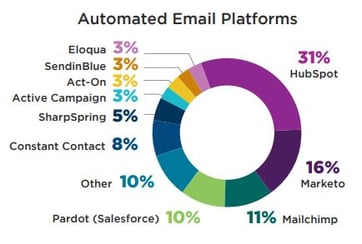 In the early days of automobile manufacturing, cars were considered luxury items. The manufacturing process for a single car was a costly and labor-intensive process that would take up to 12 hours to complete because each vehicle had to be manually assembled by a small team of experts working on a single car at a time. However, in 1913 Henry Ford introduced the world’s first moving assembly line to his factory floor, reducing the time it took to produce a single car from 12 hours down to 1 hour and 30 minutes.
In the early days of automobile manufacturing, cars were considered luxury items. The manufacturing process for a single car was a costly and labor-intensive process that would take up to 12 hours to complete because each vehicle had to be manually assembled by a small team of experts working on a single car at a time. However, in 1913 Henry Ford introduced the world’s first moving assembly line to his factory floor, reducing the time it took to produce a single car from 12 hours down to 1 hour and 30 minutes.
Since this modern introduction to the concept of technological automation, society has been moving ever—forward in an attempt to automate more and more. This is just as true for manufacturing and engineering, as it is for marketing.
Just like Henry Ford’s small team of experts, even the best marketing teams are limited by the number of hours in a day. This makes it incredibly difficult to scale up operations without bringing on an ever-increasing number of employees or introducing some form of marketing automation.
Today, the best marketing teams utilize marketing automation tools to manage and refine their campaigns, acquire and nurture more and higher-quality leads, and ultimately achieve greater ROI for their initiatives.
The State of Automation in Technical Marketing
Each year we survey our technical marketing database to better understand the strategies, tactics, and tools that they are using to further their operations. This survey includes a series of questions on the use of marketing automation tools.
What surprised my team at engineering.com, was that only 66% of technical marketers are using some form of marketing automation tool in 2021. On the surface two-thirds is respectable, but other studies have found the average across all companies to be 75%. This indicates that technical marketers fall slightly below the broader average.
Technical marketers work in such forward-thinking industries (e.g., engineering, design, manufacturing, etc.) that we expected their utilization of innovative tools and resources to be higher than the average, not lower. Marketing automation today is so accessible and powerful, that we believe there are very few instances where a technical marketing team would not benefit from using a marketing automation tool of some kind.
The Most Popular Marketing Automation Platforms
There are a plethora of options when it comes to marketing automation software, and choosing one out of the many can feel like a daunting task. However, before making a decision it can help to know what others in the industry are using. We asked the technical marketing respondents who indicated that they were already using an automation platform of some kind (i.e., 66% of respondents) to select the primary tool they are using.
Far and away, the most popular platform that our respondents are using is HubSpot. HubSpot alone made up 31% of all use-cases, with Marketo (16%), Mailchimp (11%), and Pardot by Salesforce (10%), following closely behind. HubSpot is one of the platforms we use at engineering.com, and we have found it to be robust and powerful, yet still intuitive enough for the average user to grasp the basics with brief training.
3 Signs You Need Marketing Automation
For the roughly 34% of you out there whose teams are not using a marketing automation platform, here are a few signs that your team or organization is in need of one of these tools.
1. You're Using a Number of Different and/or Disconnected Marketing Tools
You’d be surprised to learn just how many marketing teams out there are continuing to use multiple legacy tools that are siloed from one another. For example, you may have one tool to schedule all your social media posts; another tool for managing your email marketing; and yet another for building and maintaining landing pages. All of these tools exist independently from one another, and none feed information into the others. This is highly inefficient and often ineffective at generating the volume or quality of leads that your team/organization needs.
Modern marketing automation tools take all of these disparate activities and house them under a single roof. This, in turn, helps reduce cost (by reducing the number of tools required), increases the integration between your different activities, makes reporting and tracking of individual activities easier (which improves your ability to personalize a customer’s buying journey, as you can see all the actions they are taking across all of your marketing efforts), and reduces the amount of energy and time required to train new members of your team (where once new-hires would have to learn 3 or 4 different tools, now they only need to learn 1).
There really is no reason to be using single-threaded marketing tools in today’s day and age. Platforms like HubSpot allow you to manage your landing page creation, maintain and optimize blogs for SEO, manage and track digital advertising campaigns, manage social media channels, build and execute email marketing campaigns, and export comprehensive and customizable reports, all from within a single interface and platform.
2. You're Still Using Your CRM to Send Emails
Using a CRM system to send marketing-related email content to your contact database should be considered a marketing faux pas at this point. Email marketing is one of, if not the most powerful tool in a digital marketer’s toolbox. It’s a well-known fact that email marketing offers one of the highest ROIs when compared to other marketing activities – some estimates have put it as high as $42 for every $1 spent on email marketing. Furthermore, we know that email marketing is particularly useful for technical marketers – in our 2021 survey of technical marketers, nearly 50% of respondents cited email marketing as their most preferred marketing tactic, higher than any other marketing activity.
Put simply, CRM systems are not designed with email marketing in mind, and they lack the robust set of features that a marketing automation tool has when it comes to this form of marketing. If a CRM system has email capabilities of any kind, they’re typically highly manual. This means that any emails sent out through the system must be manually set up and lists of recipients manually selected and/or built. Furthermore, the emails themselves are typically not aesthetically pleasing, as the email builders that are made available by most CRM systems are lacking in features.
This highly manual process of sending emails via a CRM system makes it almost impossible to nurture leads. You’d need an entire dedicated team of marketers to monitor how recipients are interacting (or not interacting) with your emails, and then manually build lists for each possible outcome, and finally create and send different emails to each of these subgroups manually. Not to mention all the additional information that isn’t being captured by a CRM (e.g., leads interacting with your brand outside of strictly opening or not opening emails).
CRM systems are important tools, but they are not designed to be used as full-time email marketing systems.
3. Your Team or Organization is Looking to Grow
Most importantly, marketing automation tools are designed to enable growth. Oftentimes entire companies, or individual marketing teams within the organization, want to experience sales growth but are constrained by resources, manpower, or both.
Marketing automation allows small and medium-sized marketing teams to punch above their weight class, and it gives large marketing teams the ability to take their operations to the next level. With a sophisticated marketing automation tool, your team can set up automated processes to generate, nurture, and follow-up with leads with minimal manual involvement.
This automatic outreach is done through a lead-scoring system, where you assign unique values to individual actions that a lead can take. Actions include things like filling out forms, visiting your site, reading and/or interacting with e-blasts they receive from you, reading and engaging with your content, etc. Each of these actions can trigger a response from the system – for example, if a lead fills out a contact form on one of your product-specific landing pages, they can then automatically be sent an email with a promotional discount on the specific product they were looking at when they filled out the form. But, more importantly, once a lead has performed enough of these actions, they can then be considered qualified and worthy of direct outreach from one of your sales representatives. In this way, marketing automation personalizes each customer’s buying journey automatically.
The scalability that marketing automation allows for is second-to-none. With a team of 5 or even fewer marketers, you could be gathering and nurturing thousands of leads all at once, something which would be impossible for a team of 5 to handle manually. In this way, marketing automation is designed to help your organization grow beyond what an all-manual approach allows for.
All Aboard the Marketing Automation Express
If we haven’t made it clear enough already, you need a marketing automation tool. There truly are few, if any instances where a marketing automation tool would not improve the operations of your existing marketing setup. We understand that the prospect of adopting an entirely new system can seem a little daunting at first, but marketing automation tools are becoming more and more user-friendly and intuitive every day. On a personal note - and for inspiration – I set up our marketing automation platform over the Christmas break 8 years ago. Not only was I successful, but I also managed to remain married through it all. What I did then was not perfect, but I was able to quickly grasp the basics of the platform in a matter of days which allowed us to quickly get up and running in time for the new year.
If you have anything you’d like to add to the content of this blog, like sharing your marketing automation experiences, good or bad, please feel free to leave a comment below!





